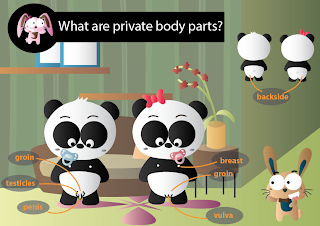I’ve use Iterative method to support my GP by
consulting with lecturers. Different lecturer has different feedback and
suggestion for my project. After each time consult with them I combine the
comments and improve my works for next time.
In my illustration book for kids I want to
teach them about private body parts. So I decided to draw body of a boy and a
girl. This is my first version of it.
After consult with teacher the first time,
they said my illustration was too common. There was nothing special for the
kids to remember about it. So I decided to change my character with different
style. Here come my second version of it
At the second consultant with lecturers, I
asked them whether I should take of the clothes of the character to teach about
the private in clear and more intelligible way. Ms Peh said it was a good idea
to take out the clothes but I had to be very careful, as my illustration will
become more sensitive. I should interview some parents to see what were their
feedbacks about it. I were thinking about changing my character into an animal.
So that it would be friendlier to children and the parents wouldn’t feel so shy
when they teach the children about it, too. Ms Zi Xi agreed it was a good idea,
I should consider it.
This time my lectures were quite happy with
my idea about using animal to illustrate human body parts. But Mr Den suggested
me maybe I want to change the illustration style to my previous illustration
style which were using gradient without outline for it. To add in, Ms Zi Xi
suggested me to add in some background because currently the white background
looked like a boring textbook. So this is my final illustration about the
private body parts illustration.
By using iterative method, I’ve improved a
lot in my project. After any feedback of my lecturers, I always try to change
it by using new style of illustration or add in more idea for it. Imagine if my
lecturers were real customers, they would suggested something that the
customers were really looking for in a illustration book about sex education
for their children. Looking back in my first illustration until the final page
for this page, I’ve changed a lot of things. Without the feedback and
suggestion from my lecturers, I wouldn’t have improved so far like this.







